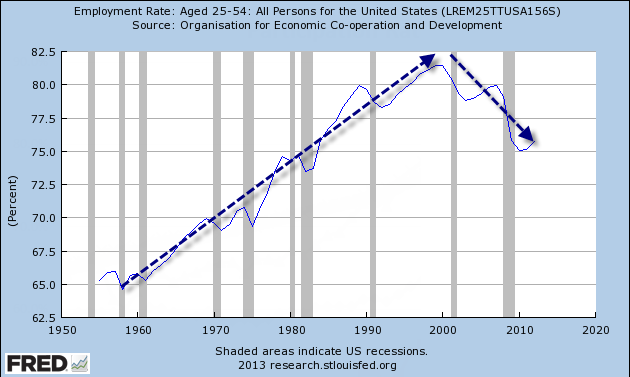Seems we would be better off tracking employment.

If 42% of the population is not working, why is the unemployment rate only 7%? That makes no sense to me. And if 42% of the population isn't working, what are they doing?
Interesting how the rate of employment has dropped like a rock since 2008.
Tom

If 42% of the population is not working, why is the unemployment rate only 7%? That makes no sense to me. And if 42% of the population isn't working, what are they doing?
Interesting how the rate of employment has dropped like a rock since 2008.
Tom




Comment